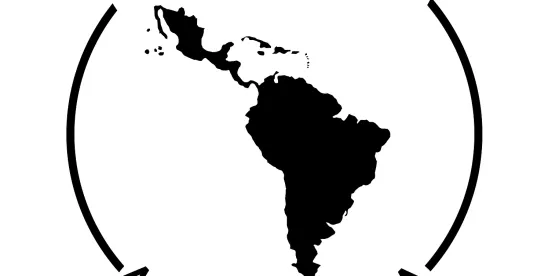Latin American economies are uniquely positioned due to their geographical proximity to the United States, extensive economic integration, significant immigration patterns and potential for growth. The U.S. serves as the dominant market for exports from the region, while millions of Latin American migrants contribute substantial remittance flows to their countries of origin. As the region prepares for potential changes under a second Trump administration, there could be profound implications for Latin American economies, regional trade, and financing available from international sources.
One of the primary concerns surrounding Donald Trump’s return to the White House is the resurgence of high tariffs that characterized his previous administration. These tariffs, often imposed on key trading partners, could disrupt Latin American economies by increasing the cost of exporting goods to the U.S. But beyond that, the new administration has begun to make significant changes that will have considerable effects on the financial markets and the access to capital in Latin America.
Banking Markets
Under President Trump, the expected revival of U.S. banking sector deregulation might have ripple effects on Latin American banks. If the Trump administration continues to emphasize its expansionist view and priorities, Latin American banks could see increased competition, especially from U.S. institutions looking to expand their footprint in the region. This could lead to more favorable lending conditions for Latin American borrowers, provided they meet stringent compliance and creditworthiness standards that may be utilized by U.S.-based banks.
U.S. banks could see renewed interest in Latin America as they seek to diversify their portfolios and tap into emerging markets. The potential for infrastructure projects, especially in countries like Brazil and Mexico, should attract U.S. bank financing. This scenario could also lead to increased lending activity, particularly for sectors such as energy, agriculture and technology. The ability to navigate regulatory challenges and foster relationships with U.S. banks could unlock new avenues for financing.
Additionally, international credit providers might be more inclined to engage in syndicated loans with Latin American banks, particularly those demonstrating resilience in their financial metrics. This may well result in a more robust banking market and tighter spreads available to Latin American borrowers.
Bond Markets
The second Trump presidency could have both negative and positive implications for Latin American issuers in the bond markets. On one hand, a strong dollar policy may deter Latin American issuers from accessing international markets as it would be more expensive for Latin American countries to issue bonds in U.S. dollars. In addition, the levels of uncertainty that in many ways characterized the first as well as the current Trump administration could have a chilling effect on the financial markets, where stability typically favors more robust issuance levels. However, if the Trump administration pursues policies that favor economic growth, commodity prices could increase, thereby enhancing the scenario for commodity-dependent Latin American nations. This could also lead to a resurgence in demand for sovereign bonds, especially from more frequent issuers such as Mexico and Brazil.
The bond markets may experience a surge in issuance from Latin American sovereigns and corporates looking for capital from international investors. A favorable U.S. interest rate environment could encourage more capital flow into Latin American bonds, especially if U.S. yields remain low. Furthermore, an increase in the issuance of project bonds could result from increased interest by U.S. authorities or, in the absence of U.S. interest, multilateral institutions, in prioritizing infrastructure projects in the region. This trend could also see increased participation from ESG-focused investors, as Latin American issuers adapt to global sustainability trends while U.S. based issuers move away from ESG in line with the administration’s priorities.
As Latin American economies seek to grow, there may be increased opportunities for securitization of various cash flows—such as those from infrastructure, real estate, and consumer finance. This could attract international investors seeking higher yields. A robust structured finance market may be available to potential borrowers when there are less than favorable financial terms available in the more traditional debt and credit markets. These types of transactions are typically executed in the bank market or as a private placement of securities to a small group of investors, although in some instances where the deal size exceeds $100 million, sponsors have chosen to tap the Rule 144A market for a wider distribution to investors and increased liquidity.
Finally, the potential for increased U.S.-Latin America trade agreements could bolster confidence among international investors, resulting in more favorable yields for bond issuers. Regional governments may capitalize on this by issuing longer-term bonds to finance infrastructure projects, thus attracting more foreign capital.
Equity Markets
In the equity markets, Latin American companies could benefit from a favorable investment climate if the Trump administration takes steps to foster a business-friendly approach. Increased foreign direct investment from the U.S. could lead to a surge in initial public offerings (IPOs) and secondary offerings for issuers in the region. Sectors that could see significant interest include technology, renewable energy, and agribusiness, as investors seek to diversify their portfolios.
However, equity markets in Latin America could face volatility under a second Trump presidency, driven by fluctuating U.S.-Latin America relations. Despite and as a result of the volatility, international investors could find investment opportunities in emerging tech companies and renewable energy initiatives, especially in countries like Chile and Colombia, which are positioning themselves as leaders in these sectors. The Brazilian markets have been particularly slow after a flurry of activity during the COVID pandemic, although penned up need for capital and investor interest are expected to contribute to a more active market in 2025.
Geopolitical tensions, particularly between the U.S. and China, could further complicate matters for Latin American companies that rely heavily on export markets. A number of tariffs have been levied on various countries and industries during the early days of the second Trump administration, demonstrating that the administration will continue to use tariffs and the threat thereof as a foreign policy tool. Potential equity issuers and investors will certainly monitor how the Trump administration's policies influence trade relationships and the macroeconomic environment.
ESG Finance
The return of Donald Trump to the White House has resulted in concerns about significant shifts in U.S. climate policy. Although the green bond market for Latin American corporate issuers is expected to grow, diminished political support for ESG investing in Washington could challenge the lending strategies of U.S.-based banks. President Trump has openly criticized ESG regulations, and his administration has advocated for the reversal of climate-related disclosure mandates. The administration is also anticipated to reduce the regulatory authority of federal agencies on issues like air quality, potentially resulting in increased greenhouse gas emissions. Signing a presidential executive order withdrawing the United States from the Paris Agreement was one of President Trump’s first actions as President, which could impact the decarbonization goals of the world’s largest economy.
While climate policy might not be prioritized under President Trump, Latin American companies' investments in decarbonization and sustainability efforts are likely to ensure a consistent supply of green and other labeled bonds from the region. Global investor demand is expected to remain strong, particularly from investors located outside of the United States. European portfolio managers often have mandates to incorporate ESG fixed income into their portfolios. However, this does not preclude investors—whether in the U.S. or Europe—without such mandates from investing in green bonds, especially if they foresee long-term returns. The demand for these bonds is expected to continue, with a robust buyer base potentially enhancing their performance in secondary markets.
Expectations of inflation under President Trump, partly due to protectionist trade policies, could exert upward pressure on U.S. Treasury yields, affecting Latin American issuers of both ESG and conventional bonds. While rising yields may slightly increase funding costs, they are not anticipated to close the market for Latin American issuers.
One area of concern is the potential impact on multilateral development banks (MDBs) from an anticipated shift away from climate finance under the Trump administration. Given the significant influence of the U.S. on major multilateral lenders, these institutions may face pressure to reduce their focus on ESG strategies. Many market participants have suggested that priorities may shift away from climate issues towards other areas, such as poverty alleviation. This shift would likely reflect changes in priorities from the U.S. Treasury, which holds substantial voting power at institutions like the International Monetary Fund and the World Bank, as well as the Inter-American Development Bank (IDB), where it possesses 30% of the voting shares.
Despite these potential changes, the World Bank Group and the IDB are looking to enhance their role in mobilizing private-sector support for climate-friendly infrastructure projects in the region. However, challenges such as contingent risks associated with infrastructure projects may hinder public-private financing arrangements. These risks raise concerns about repayment flows, which can deter private sector participation in these initiatives.
Finally, Wall Street banks are likely to remain engaged in the ESG market despite potential political shifts in the U.S. This suggests that regardless of the political climate, the financial sector may continue to facilitate the growth of the green bond market in Latin America, driven by global investor interest in sustainable investments.
Securities Law Considerations
Under a second Trump administration, changes in U.S. trade and economic policies could significantly impact the securities markets in Latin America. U.S. federal securities laws, primarily governed by the Securities Act of 1933 and the Securities Exchange Act of 1934 regulate the issuance and trading of securities. Latin American issuers seeking to raise capital from U.S. investors must navigate these regulations, including registration requirements and exemptions such as Rule 144A for private placements to qualified institutional buyers and Regulation D for less widely distributed private placements.
The Trump administration's expected emphasis on deregulation could lead to a more favorable environment for cross-border investments, potentially easing regulatory constraints for Latin American companies accessing U.S. capital markets. Additionally, the U.S. Securities and Exchange Commission (SEC) might adopt a more lenient stance on compliance requirements, encouraging more Latin American companies to seek U.S. listings or engage in debt offerings to U.S. investors. In the early days of the Trump administration, the SEC has shifted resources away from crypto enforcement and has taken steps to dramatically reduce staff which should result in less regulatory overview with respect to the securities markets. These initiatives, as well as others, highlight the dynamic pace of change within the SEC and should result in a shifting regulatory landscape for issuers and market professionals.
Banking Law Considerations
In the banking sector, U.S. federal laws like the Dodd-Frank Wall Street Reform and Consumer Protection Act and the Bank Holding Company Act regulate the operations of U.S. banks and their international transactions. A deregulatory approach under the Trump administration could reduce compliance burdens, making it easier for U.S. banks to operate and extend credit in Latin America. This may enhance competition and lead to more dynamic banking relationships between U.S. and Latin American financial institutions. Since assuming office in January 2025, Trump has signed a number of executive orders that indicate an aggressive agenda that will have significant effects on the banking industry. The administration has focused on rescinding diversity, equity and inclusion (DEI) initiatives within federal agencies, sought to ease the use of digital assets in the financial system and implemented a freeze on regulatory rulemaking while the administration evaluates its regulatory priorities. These various initiatives could affect the landscape applicable to Latin American borrowers seeking to access the credit markets.
Latin American banks looking to partner with U.S. entities must carefully consider compliance with anti-money laundering (AML) and know-your-customer (KYC) regulations, which are likely to remain stringent regardless of broader deregulatory trends. These regulations ensure the integrity of international banking operations and prevent illicit financial activities.
Conclusion
The return of Donald Trump to the U.S. presidency has already introduced significant shifts in trade, economic, and financial policies affecting Latin America. While increased tariffs and restrictive immigration policies may pose challenges, opportunities in banking, securities, and structured finance could arise from a deregulatory environment and a renewed focus on U.S.-Latin American relations.
Latin American economies will need to strategically navigate these changes to optimize their financial and trade engagements with the U.S. Enhanced cooperation with U.S. financial institutions, coupled with a focus on sectors aligned with global sustainability trends, could create opportunities for Latin American issuers and borrowers.
Ultimately, the ability of Latin American economies to adapt to evolving U.S. policies will be crucial in maintaining economic stability and fostering long-term development in the region. International investors and Latin American issuers and borrowers should remain vigilant, balancing the benefits of increased capital access and investment opportunities with the potential risks posed by geopolitical shifts and regulatory changes. By leveraging strategic partnerships and maintaining robust compliance frameworks, Latin American companies and financial institutions can position themselves to capitalize on emerging trends and mitigate the anticipated challenges.




 />i
/>i
